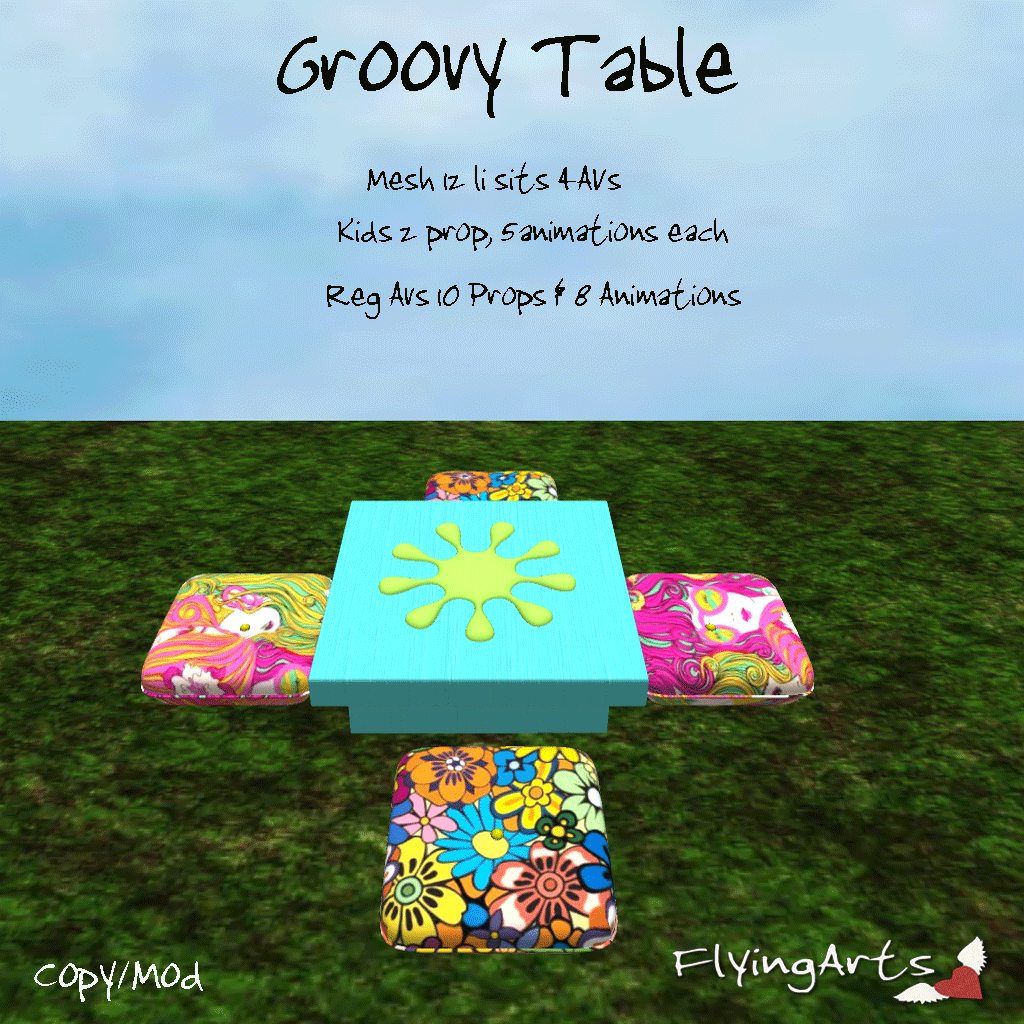
Groovy table for the whole family to enjoy together. Sits up to 4 avatars at a time with both reg sized and kids animations in each pillow. Kids choose from 7 animations while larger AVs choose from 18. You can sip, snack, lounge, strum and enjoy the day together. Available for free to Purple Sloth Productions group members during the month of July 2021 at both FlyingArts locations: the Main Store (http://maps.secondlife.com/secondlife/De%20Newenham/171/229/701) and the Alfonzo Isle Outpost (http://maps.secondlife.com/secondlife/Pixiboop%20Island/95/168/2847)
